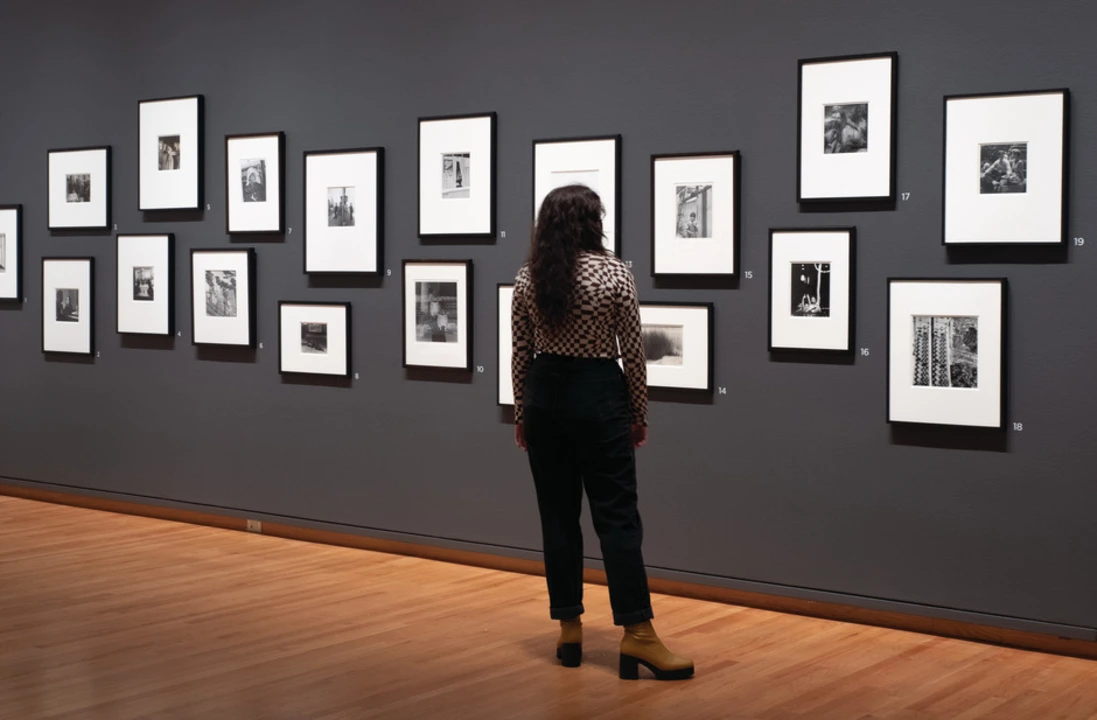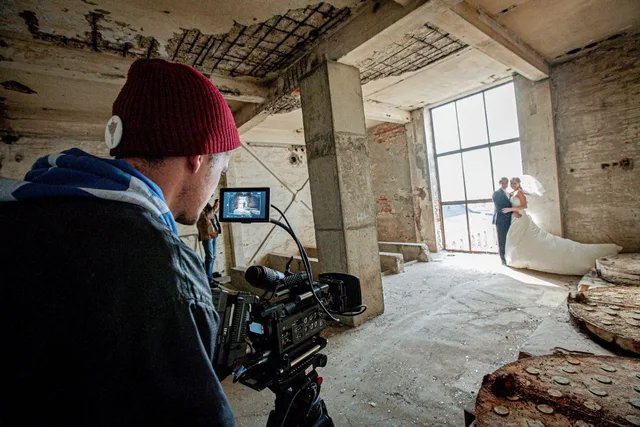Exploring the Cross-Pollination Between Photography and Painting
Photography and painting have a long-standing relationship of mutual admiration, exchange, and inspiration. While the two have been intertwined for centuries, in recent years, the influence of photography on painting has become particularly apparent. From the use of photography as reference material for paintings to the incorporation of digital printing techniques into painting, the relationship between photography and painting has been growing ever more complex.
One of the most notable shifts in the relationship between photography and painting has been the way digital photography has become integrated into the painting process. Many contemporary painters are now using digital photographs as reference material for their works. This allows them to capture lighting and details with more accuracy than ever before. Additionally, digital photographs can be used to experiment with ideas and techniques, which can then be adapted and incorporated into a painting.
Photography has also had a profound influence on painting's aesthetic. Photorealism, a style of painting that strives to recreate a photograph in paint, has become increasingly popular in recent years. Photorealism offers painters a way to recreate photographic details in a shaded, textured way. This can create a more dynamic and visually appealing painting than traditional painting techniques.
Digital printing techniques have also been used to create works of art. By combining digital photography with screen printing or dye sublimation, artists are able to create paintings that incorporate digital elements. This has enabled them to create works of art that are not only visually stunning but also highly detailed and precise.
The use of digital photography has also enabled painters to explore new expressive possibilities. By combining photography with painting, artists can create unique works of art that combine the best of both worlds. For example, they can use photography to capture a certain moment in time, while painting can be used to add color, texture, and emotion to the image.
The relationship between photography and painting is an ever-evolving one. As technology continues to advance and more photographers and painters experiment with ways to combine the two mediums, the possibilities for creating unique and captivating works of art will only increase. In the future, photography and painting may become even more intertwined, ushering in an entirely new era of creative expression.
Examining How Photography Has Changed the Art of Painting
The invention of photography has had a profound effect on the world of art, particularly the art of painting. In the past, paintings were the only way to capture a moment, but now photography has made it possible to capture moments in an instant, with extraordinary accuracy.
Photography has changed the way painters approach their work. Before the advent of photography, painters had to rely on their own skills and memory to capture an image. But with the advent of photography, painters now have access to a vast array of images to draw inspiration from. Photographers have revolutionized the way painters create their works, with the ability to capture light and color in a way that was previously impossible.
The use of photography has also opened up a range of possibilities for painters. Photographers are now able to capture scenes from angles that were previously impossible, giving painters a great deal of freedom to explore different angles and perspectives. By using photographs as reference material, painters are able to explore a greater range of possibilities in their paintings.
The use of photography has also enabled painters to create works that are more realistic than ever before. With the use of digital technology, painters can now create works that mimic reality in a way that was previously impossible. By combining a range of photographic techniques, painters are able to create works that are incredibly lifelike and detailed.
Photography has also changed the way that painters perceive the world. Painters now have access to a vast range of images from around the world, giving them the opportunity to explore different cultures and landscapes in their work. This has opened up a whole new world of possibilities for painters, allowing them to create works that are truly unique.
The influence of photography on the art of painting is undeniable. It has opened up a world of possibilities for painters, allowing them to create works that are more realistic and detailed than ever before. By using photographs as reference material, painters are able to explore new angles and perspectives, enabling them to create works that are truly unique and stunning.
Exploring the Creative Possibilities of Photography-Inspired Paintings
The art world has been inspired by photography for centuries, and the influence of photography on painting has only increased in recent years. While traditional painting techniques continue to be revered, photography has opened up a wealth of creative possibilities for artists to explore.
Photography-inspired paintings take elements from the photographic image and then reinterpret them in a painting. This can mean simply taking a photograph and painting it, or it can mean manipulating the image to create something entirely new. Photographic elements such as composition, color, and light can be used to create something that is both a painting and a photograph.
Photography-inspired paintings can also be used to create powerful, emotionally-charged works of art. By using the photographic image as a starting point, the artist can add layers of meaning and emotion to the painting. This can be done by manipulating the image, or by simply using the photograph as a reference for the painting.
The use of photography in painting also allows for more abstract works. Photographic elements such as texture, line, and shape can be used to create pieces that are both abstract and representational. By combining photographic elements and traditional painting techniques, the artist can create something that is entirely unique.
Photography-inspired paintings are not limited to representational paintings. Abstract photographs can also be used as a source of inspiration. The use of color, light, and texture can be combined to create something that is entirely new and unique. This opens up a world of possibilities for abstract painters.
The use of photographs in painting is not limited to painting. Photography can also be used to create sculptural works of art. Photographic elements such as light and shadow can be used to create three-dimensional sculptures. This allows for a new level of creativity and experimentation, and sculptors can take advantage of the possibilities photography provides.
Photography-inspired paintings and sculptures are often used to create works that are both visually striking and emotionally powerful. By combining traditional painting techniques with elements from photographs, the artist can create something that is entirely unique and thought-provoking.
How Photographers are Inspiring Painters to Create More Realistic Artwork
Photography has been a major influence on the art of painting since its invention. In the 19th century, photographers began to use the camera to capture images of people and places. As a result, painters began to use photography as a reference for their own artwork. This led to a more realistic style of painting, with a focus on capturing the details and nuances of the subject.
Today, photographers are inspiring painters in a variety of ways. By exploring the world through the lens of a camera, photographers are able to capture unique and interesting perspectives that can be used as inspiration for paintings. As well, photographers can experiment with different techniques, such as long exposures, to create abstract and surreal images that can serve as a source of inspiration for painters.
Photographers are also utilizing the power of technology to manipulate the images they capture. By using digital editing software, they are able to make adjustments to the colors, contrast, and other elements of the image to create a more realistic painting. This allows painters to gain a better understanding of the colors and tones of the scene, making it easier for them to replicate it in their own artwork.
In addition, photographers are using filters, such as Instagram, to enhance and distort their images. By applying these filters, photographers can create unique and surreal scenes that serve as a source of inspiration for painters. These filters can be used to create a more abstract painting, or to simulate a more realistic painting.
Finally, photographers are also utilizing new technologies, such as drones, to capture aerial shots of the landscape. By using drones, photographers are able to capture scenes from angles that would otherwise be impossible to replicate in a painting. This allows painters to gain a better understanding of the different perspectives and angles of the scene, giving them more insight into how to replicate it in their own artwork.
Overall, photography has been a major influence on the art of painting for centuries. By exploring the world through the lens of a camera, photographers are able to capture unique and interesting perspectives that can be used as inspiration for painters. As well, photographers are utilizing digital editing software, filters, and drones to create more realistic paintings. As a result, painters are able to create more realistic artwork that is inspired by the world around them.
Exploring the Impact of Photography on Traditional Painting Techniques
The invention of photography has had an immense impact on art. It has changed the way painters approach the craft, and has led to the development of new painting techniques. By understanding the influence of photography on traditional painting methods, one can develop a deeper appreciation for the art form.
The most obvious influence of photography on traditional painting techniques is the use of photo-realism. Many painters now use photography to capture details and scenes with a near-perfect degree of accuracy. This allows them to recreate an image in a painting with an almost perfect level of realism. As a result, many of the traditional painting techniques that were used to create a realistic painting have become less popular.
Photography has also had an impact on the way painters approach the use of colour. For centuries, painters have used a variety of methods to mix and blend colours in order to create a realistic image. However, with the advent of digital photography, painters have been able to capture exact colours with just the click of a button. This has made it easier for painters to create realistic images with more accurate colours.
The influence of photography on traditional painting techniques can also be seen in the way painters approach composition. Before the invention of photography, painters used to rely solely on their imagination to create a composition. However, with the advent of photography, painters can now use photographs to study the composition of a scene and use it as a reference for their painting. This allows them to create a composition that is more realistic and accurate.
Finally, photography has also had an impact on the way painters approach perspective. Before the invention of photography, painters relied on their own experience and intuition to create a realistic scene. However, with the advent of photography, painters can now use photographs to properly map out the perspective of a scene. This allows them to create a painting with a more accurate perspective.
In conclusion, it is clear that photography has had an immense impact on traditional painting techniques. By understanding the influence of photography on traditional painting methods, one can develop a deeper appreciation for the art form.


